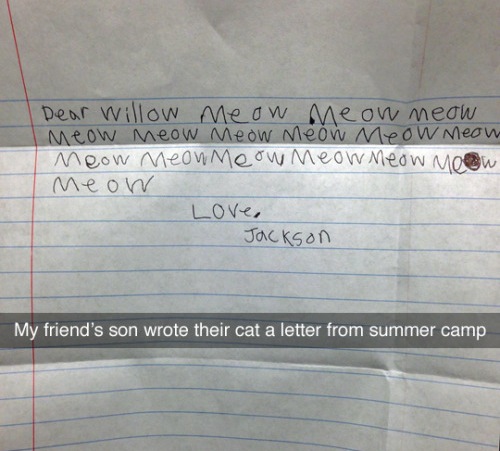As human beings, we bear certain evolutionary advantages that have allowed us to rise to the top of the food chain -- a massive brain and opposable thumbs, most notably. But there are plenty of animals down there who went in some different directions. The insect kingdom is one of the most diverse and prosperous, and will probably inherit the planet after we screw it up enough, so it's not surprising that they've developed some pretty badass abilities of their own -- insanely deadly toxins, most notably. In this feature, we'll share ten insects and other bugs that can seriously mess up your life.
Tarantula Hawk Wasp
![most venomous bugs]()
Different insect venoms affect people in different ways. Some cause a long-lasting pain that can stick with you for days. The
tarantula hawk wasp, which lives in the southern United States, goes more for immediate impact. Although you'll only feel its sting for a few minutes, the memory will last a lifetime. These bugs get their name because they prey on tarantulas, paralyzing them and laying eggs in their still-living bodies. Entomologists recommend, if you get stung by one, to just lay down and scream until the pain goes away, because it's so intense it can disrupt your muscle movements and cause further injury.
Australian Funnel Web Spiders
![most venomous bugs]()
The bites of most spiders are relatively harmless -- you'll get some swelling and pain or itching for a day or so, but that's about it. However, a small fraction of spider species pack a little something extra in the venom glands. Many scientists consider the
Australian funnel web spider the single most threatening to humans. Bites are delivered by the males of the species, who wander far from their habitats looking for females during mating season. When threatened, they grip onto their victims and bite repeatedly, delivering a toxin that is incredibly painful and elevates heart rate and blood pressure. If left untreated, it can lead to cerebral edemas and death.
Giant Japanese Hornets
![most venomous bugs]()
There's something hilarious about the bizarre, instinctual panic that bees make us feel. Just a single one can set people off in an orgy of arm-flapping and running around. In the case of the giant
Japanese hornet, that panic is justified. These nasty bastards can grow to a length of three inches and their sting delivers more of the agony-causing chemical acetylcholine than any other bug. If that's not enough, their venom contains a scent marker that attracts other hornets to it, marking them as prey. Oh, and it also packs an enzyme that dissolves human tissue. Wave your arms harder, buddy.
Puss Caterpillars
![most venomous bugs]()
Most of the bugs on this list have a threatening appearance that is designed to keep predators away, but the
puss caterpillar goes in the opposite direction. These insects -- the child form of the female flannel moth -- are covered in a thick, shaggy coat of fibers that look like animal hair, but underneath it is a layer of tiny spines that deliver venom to anybody who touches them. Just one poke hurts as badly as a bee sting, but it's easy to get multiple ones at the same time. The pain starts small and then continues to grow, with some victims saying that it even sunk into their bones.
Fat-Tailed Scorpions
![most venomous bugs]()
In many cultures, the
fat-tailed scorpion is referred to as the "man killer" for how many deaths it racks up. These incredibly venomous arachnids live in arid regions of the Middle East, where they use their stingers to kill other insects. However, they're not afraid to use them on us either, and the effects of a strike can be incredibly painful. The neurotoxic venom that they inject is absorbed rapidly into the bloodstream and affect the central nervous system, hyper-stimulating them to cause intense pain, sweating, and drooling. At the same time, the nerves responsible for breathing start to die, which eventually kills you by respiratory failure.
Giant Silkworm Caterpillar
![most venomous bugs]()
Before an insect develops the ability to fly, it needs to keep predators away, and venom is a solid way to do it. The larval form of the
giant silkworm moth has developed a poison that is unlike any other, and it's estimated that this hairy little crawler has been responsible for the murder of at least 500 people. When you get poked with the spines, the toxin bonds to your blood cells and removes their ability to clot. That blood then leaks through your system and into other organs, eventually causing hemorrhaging in the brain and death.
Bullet Ants
![most venomous bugs]()
The scary thing about ant bites is that they don't travel alone. If you get one, you're likely to get a bunch. The
bullet ant, which lives in South American rainforests, is an inch-long instrument of pain delivery. Their sting rates a four on the Schmidt Scale, a level of measurement devised by an entomologist who specializes in animal agony. Some tribes in the area use the bugs as an initiation rite to manhood, forcing young boys to wear a glove made of leaves with hundreds of ants woven inside for ten minutes.
Amazonian Giant Centipedes
![most venomous bugs]()
Growing to an adult length of over a foot long, the
Amazonian giant centipede is gross enough to induce creepy-crawlies just looking at it. But once you learn how it hunts, things get even grosser. These beasts are known to crawl to the roofs of caves and hang down by their powerful legs. When unwitting bats fly by, the centipedes grab them and bite them, injecting a powerful venom that quickly stops their heart. The bugs then feast on their furry flying prey. Bites to humans are not normally fatal, but they cause incredible pain, fevers and a full-body feeling of weakness.
Brazilian Wandering Spider
![most venomous bugs]()
There are numerous arachnids who pack some potent poison in their bites, but the
Brazilian wandering spider is one with the most impressive body count. These babies are responsible for multiple human deaths each year as a result of their vicious bite, which delivers a toxin that blocks calcium channels in the brain. At a high enough dose, this can make you lose control of your muscles, have difficulty breathing and eventually choke to death. Add on the fact that their bites also hurt like hell and you've got a winner. One bizarre side effect of the wandering spider bite is that some victims pop intense boners that can last for hours. Doctors are studying the venom to see if they can turn it into an erectile dysfunction drug.
Maricopa Harvester Ant
![most venomous bugs]()
Many of the venomous insects in this article have been pretty flamboyant about their dangerous natures, but the humble
Maricopa harvester ant shows that big venom can come in small packages. These little bugs are found plentifully all over Arizona and their poison is generally considered the most toxic insect venom in the entire world. One sting from them can induce intense pain that lasts for four solid hours. They attack by attaching themselves to their victims with their mandibles and then pivoting around to sting multiple times in the same area. The sting also contains an alarm pheromone that triggers other ants to attack.






























































































